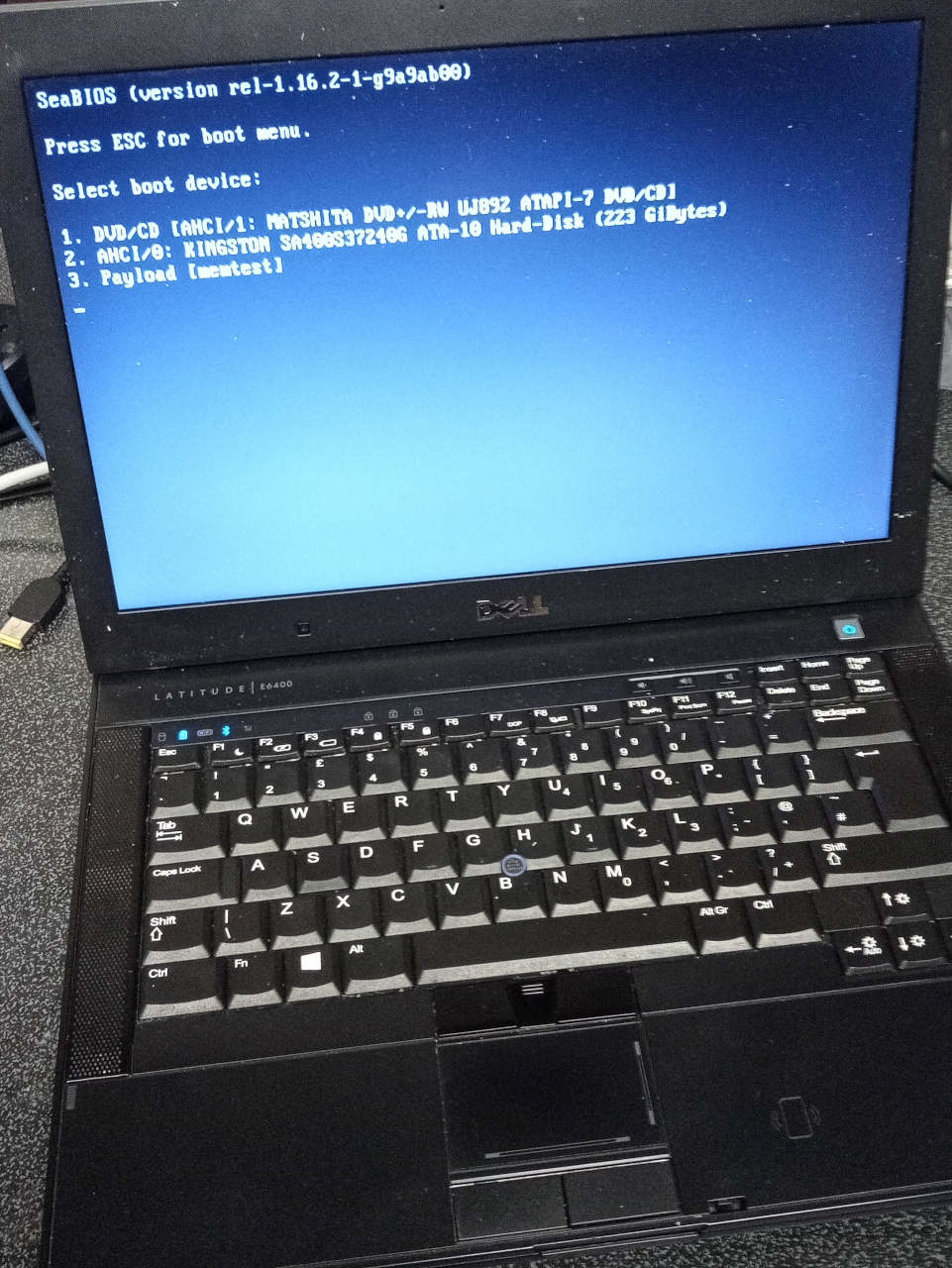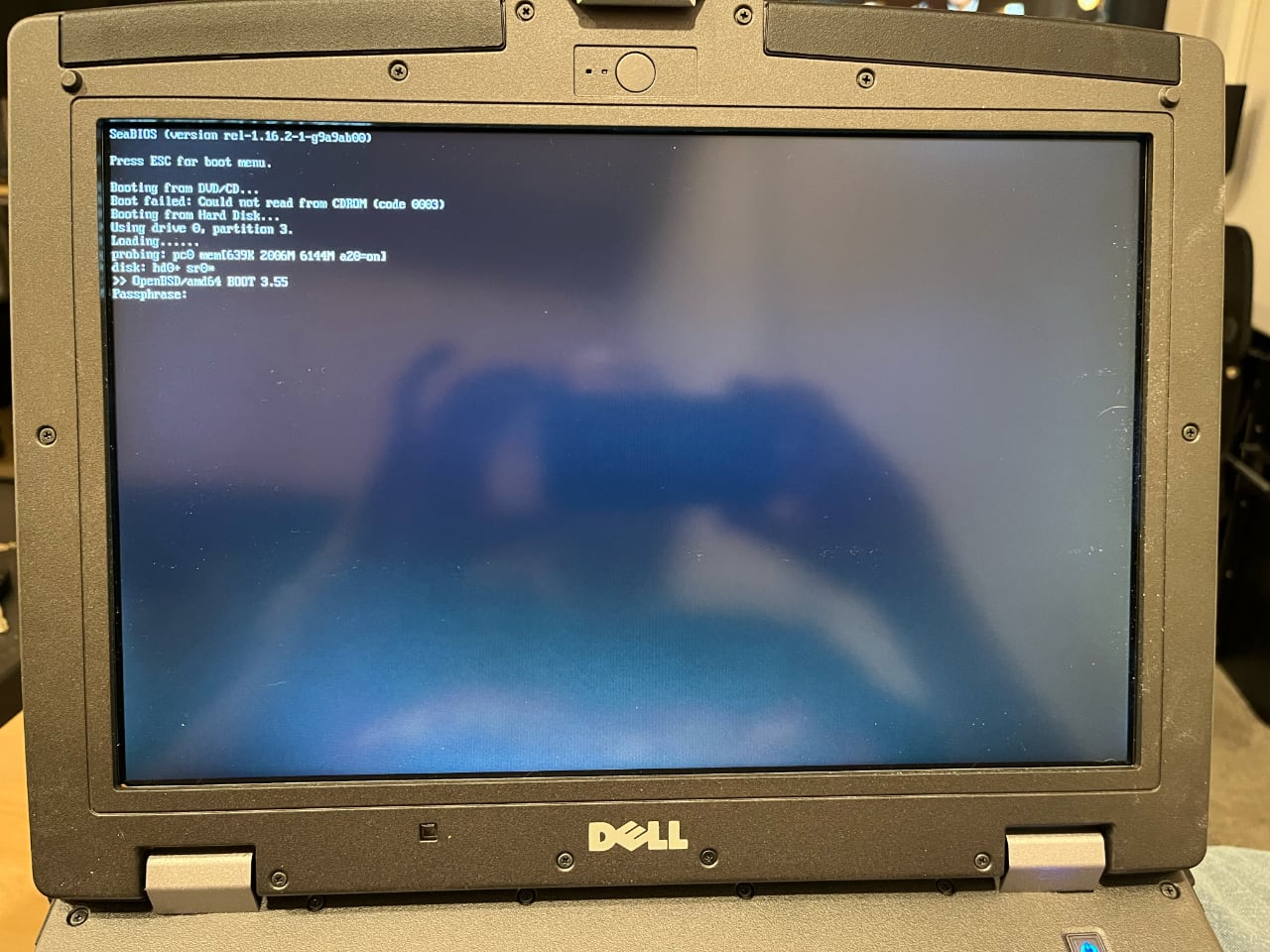Introduction
============
Known supported variants: E6400, E6400 XFR and E6400 ATG. This page has
been updated to include information about Nvidia GPU variants. See news post:
[Dell Latitude E6400 XFR support confirmed, plus experimental Nvidia GPU
support on E6400 variants](../../news/e6400nvidia.md).
**To install Libreboot, see: [E6400 installation
instructions](../install/e6400.md)**
ROM images for Dell Latitude E6400 are available for flashing in the Libreboot
release 20230423 onwards, or you can compile a ROM image for installation via
lbmk, see: [build instructions](../build/)
There are two possible flash chip sizes for the E6400: 4MiB (32Mbit) or 2+4MiB
(16Mbit+32MBit). Libreboot presently supports the 4MiB version, and provides
8MiB images for those who upgrade their flash to 8MiB or 16MiB. There appears
to be several possible mainboard PCBs for the E6400, which we believe mostly
affects the GPU configuration and the number of available SPI flash footprints:
- LA-3801P: iGPU, possibly dual SPI (however only one may be populated)
- LA-3803P: dGPU, dual SPI (however only one may be populated)
- LA-3805P: iGPU, single SPI flash (4MiB)
- LA-3806P: dGPU, unknown SPI configuration (likely at least 4MiB)
These PCB numbers can be found either under the black plastic in the RAM slots
on the bottom (CPU side) of the board, the top left corner near the VGA port
(top side, under the keyboard and palmrest), or near the CPU backplate (only
requires removal of the keyboard).
We believe that all boards will have at least a single 4MiB flash chip,
regardless of the number of SPI footprints. This is likely the most common
configuration on most available systems. The 2+4MiB configuration likely
would have only been used on systems with full Intel ME firmware with AMT
functionality, though this configuration has not yet been encountered.
Most people will want to use the 4MiB images.
Intel GPU: 100% Free Software is possible
---------------
This is a GM45/PM45 platform, so completely libre initialisation in
coreboot is possible, provided by default in Libreboot.
Management Engine (ME) firmware removed
-------------------------
This port in Libreboot makes use of `ich9gen` from ich9utils, which
you can read about in the [ich9utils manual](../install/ich9utils.md) - this
creates a no-ME setup. The Intel Management Engine firmware (ME) is completely
removed, and the ME disabled, just like on ThinkPad X200, T400 and so on.
*The E6400 laptops may come with the ME (and sometimes AMT in addition) before
flashing libreboot. Dell also sold configurations with the ME completely
disabled, identifiable by a yellow sticker reading "3 ME Disabled" inside the
bottom panel. This config sets the MeDisable bit in the IFD and sets the ME
region almost entirely to 1's, with the occasional 32-bit value (likely not
executable). libreboot disables and removes it by using a modified descriptor:
see [../install/ich9utils.md](../install/ich9utils.md)*
(contains notes, plus instructions)
Issues pertaining to Nvidia GPU variants
========================================
Copper shim for GPU cooling
---------------------------
NOTE: this section does *not* apply to XFR or ATG variants of E6400, which have
a much beefier heatsink by default.
The *default* heatsink in Nvidia variants of E6400 (regular model) has thermal
paste for the CPU, and a thermal *pad* for the GPU. This pad is woefully
inadequate, but replacing it with *paste* is a bad idea, because of the gap
there would be between heatsink plate and GPU die.
A solution for this would be to use a *copper shim*, with paste on each side,
to replace the thermal pad.
This eBay seller seems to make and sell a lot of copper shims, specifically
for E6400:
**SELLER LINK REMOVED.** - one will not be re-added. Putting ebay links on the
Libreboot site is folly, because they disappear. Just search for it and see if
you can find one for purchase. It's literally just a small bit of copper cut
smooth to just the right size. Actually, there's a lot of engineering behind
that, but installation is very simple, and any decent seller will provide
guidance.
If you buy one of those, could you measure it? Tell Libreboot the dimensions.
Get in touch with us. It would be nice to know precise specs, but that seller
provides what you need. If you find similar listings elsewhere, please also
let us know.
The shim will greatly reduce GPU temperatures, and probably improve performance
due to less GPU throttling as a result of heat.
Nouveau(in Linux) currently broken
----------------------------------
Nouveau is the libre driver in Linux, for Nvidia graphics. Nvidia themselves
do not provide binary drivers anymore, for these GPUs. It crashes in Linux,
when you try to start Xorg (Wayland is untested).
If you're booting an Nvidia variant in Linux, boot Linux with
the `nomodeset` kernel option at boot time. This means that graphics are
rendered in software.
Development discussion, for Nvidia variants of E6400, is available here:









 See:
See: